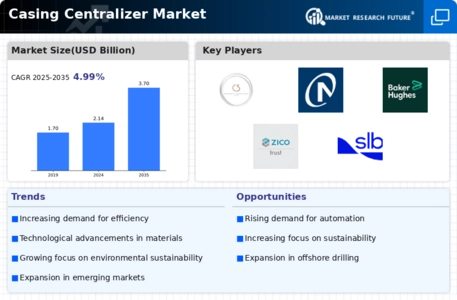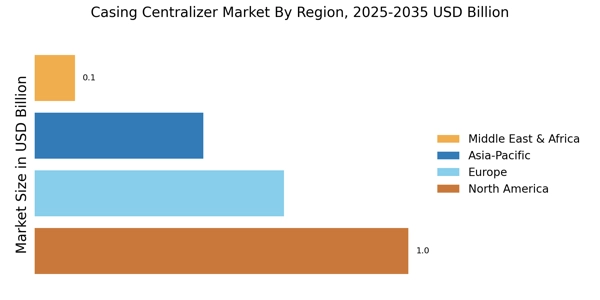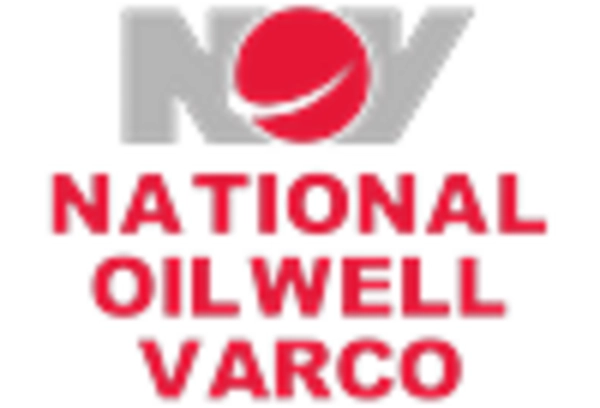Regulatory Compliance in Casing Centralizer Market
Regulatory compliance is a critical driver in the Casing Centralizer Market, as companies must adhere to stringent safety and environmental regulations. These regulations often dictate the specifications and performance standards for casing centralizers used in drilling operations. As regulatory bodies continue to evolve their guidelines, manufacturers are compelled to innovate and enhance their products to ensure compliance. This necessity for adherence to regulations is likely to stimulate market growth, as companies seek to avoid penalties and ensure operational safety. The market is expected to see an increase in demand for certified casing centralizers, which meet or exceed regulatory requirements, thereby fostering a competitive landscape among manufacturers.
Sustainability Initiatives in Casing Centralizer Market
Sustainability initiatives are becoming increasingly prominent within the Casing Centralizer Market. Companies are focusing on developing eco-friendly products that minimize environmental impact. This trend is driven by regulatory pressures and a growing awareness of environmental issues among stakeholders. Manufacturers are investing in research to create biodegradable materials and recyclable designs, which could potentially reduce waste in drilling operations. As a result, the market is likely to see a shift towards sustainable practices, with an estimated 30% of new products expected to incorporate sustainable materials by 2027. This focus on sustainability not only aligns with global environmental goals but also appeals to a more environmentally conscious customer base.
Technological Advancements in Casing Centralizer Market
The Casing Centralizer Market is experiencing a notable transformation due to rapid technological advancements. Innovations in materials and design are enhancing the performance and reliability of casing centralizers. For instance, the introduction of composite materials has improved the durability and weight efficiency of these products. Furthermore, advanced manufacturing techniques, such as 3D printing, are enabling the production of customized centralizers that meet specific well conditions. This shift towards more sophisticated technologies is likely to drive market growth, as operators seek to optimize drilling efficiency and reduce operational costs. The market is projected to witness a compound annual growth rate of approximately 5% over the next few years, indicating a robust demand for technologically advanced casing centralizers.
Rising Demand for Oil and Gas in Casing Centralizer Market
The Casing Centralizer Market is significantly influenced by the rising demand for oil and gas. As economies recover and industrial activities ramp up, the need for energy resources is escalating. This demand is prompting oil and gas companies to enhance their drilling operations, thereby increasing the requirement for effective casing solutions. The market is projected to grow at a steady pace, with estimates suggesting a potential increase in demand for casing centralizers by 15% over the next five years. This growth is driven by the necessity for efficient drilling practices that ensure well stability and reduce the risk of blowouts, making casing centralizers an integral component of modern drilling operations.
Increased Exploration Activities in Casing Centralizer Market
The Casing Centralizer Market is witnessing a surge in exploration activities, particularly in untapped regions. As energy demands continue to rise, companies are investing in new drilling projects to discover and exploit oil and gas reserves. This increase in exploration is driving the demand for casing centralizers, which are essential for maintaining well integrity and optimizing drilling performance. According to recent estimates, exploration spending is projected to increase by 10% in the coming years, further propelling the need for reliable casing solutions. The expansion of exploration activities not only boosts the market but also encourages innovation in product development to meet the challenges posed by complex geological formations.


















Leave a Comment